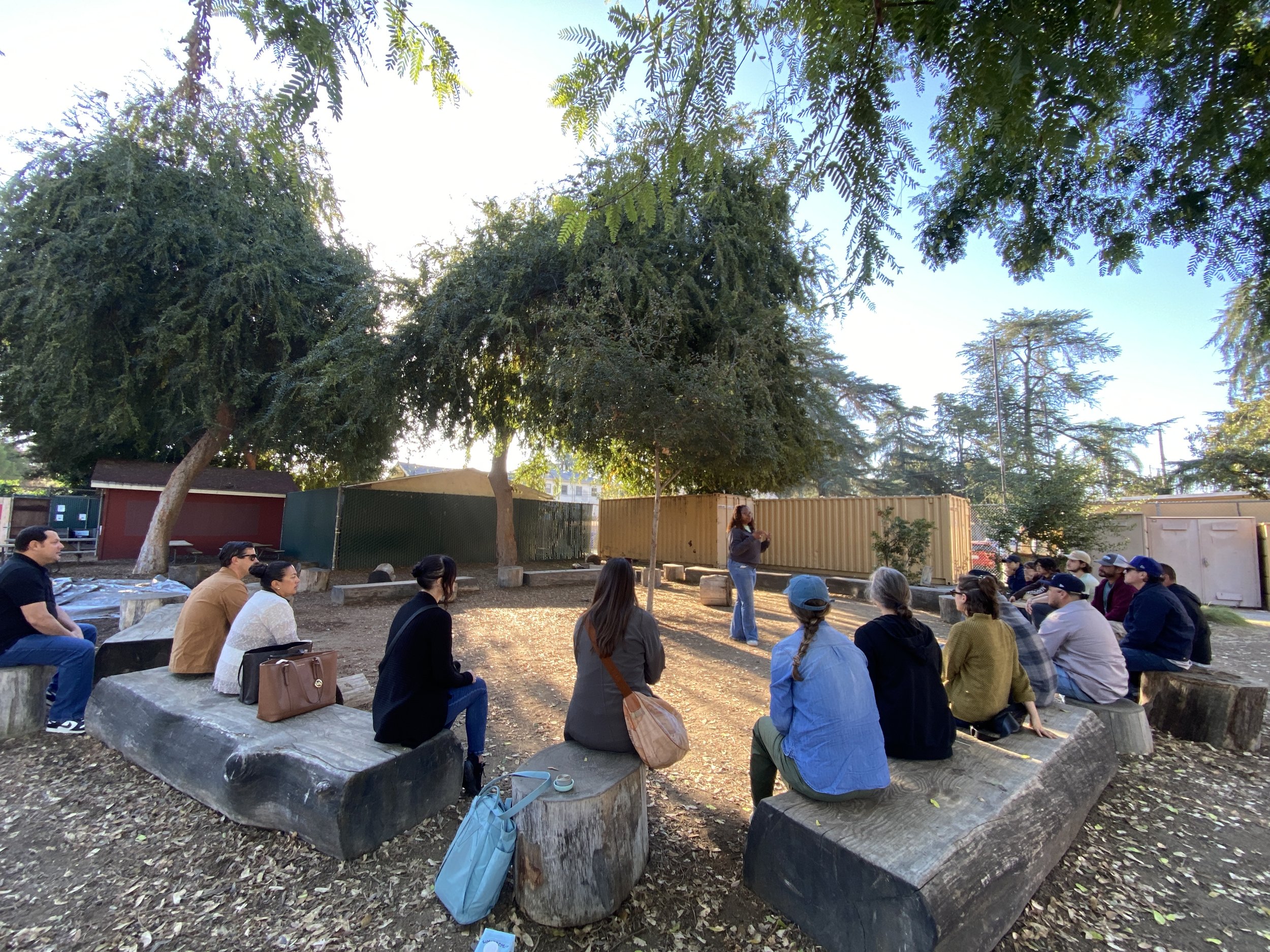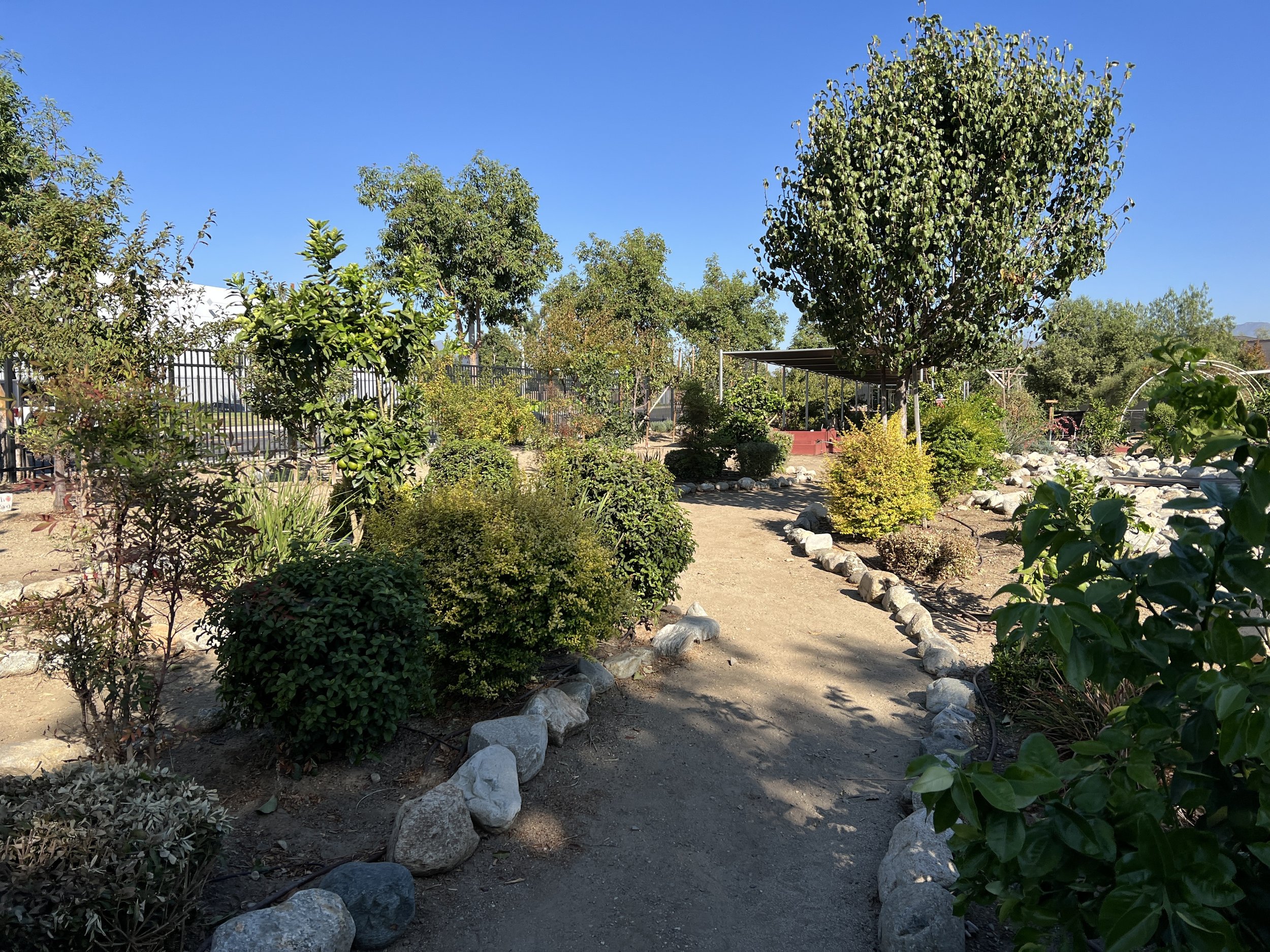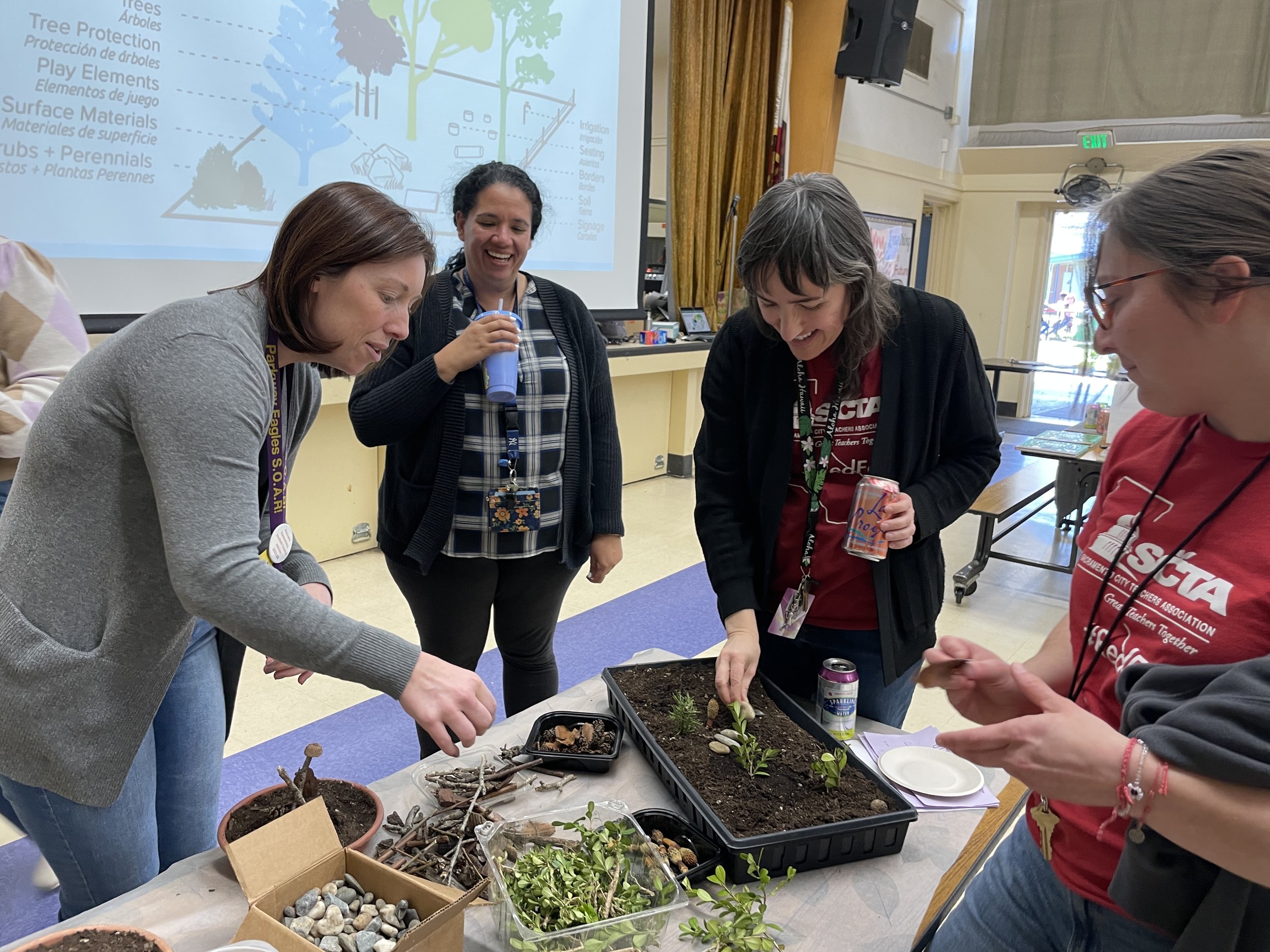Reflecting on 2025 and looking ahead
/Dear friends and colleagues,
This holiday season, we are reflecting on what your support has made possible this year—each individual story and their ripple effects throughout the movement! While 2025 was a dynamic year and not without its challenges, we:
Provided training and support to 70+ leaders from 11 school districts through our Southern California Schoolyard Forest Leadership Institute, work that has the potential to benefit 720,000+ K-12 students a year.
Celebrated the completion of two pilot schoolyard forests in Sacramento and Los Angeles, which include 99 new trees, 2 outdoor classrooms, tools and supply sheds, and professional development for teachers and staff.
Continued our work to bring schoolyard forests to Nevada and New Mexico by meeting with and interviewing 45 stakeholders, beginning to map schoolyard tree canopy, and laying the groundwork to launch state-level steering committees.
Shared inspiration and best practices with hundreds of individuals across the country and the world through our two webinar series, which featured 29 guest speakers over 12 sessions this year!
These impacts are more than just numbers—they are stories of teachers, curriculum specialists, facilities managers, district leaders, landscape designers, and more who are embracing new ideas, learning to advocate fiercely for change, building relationships with peers and experts, and working daily to transform barren schoolyards and the systems that keep them in place.
In 2026 we look forward to helping more states and school districts shift policies, adopt big plans, fund projects, and implement new practices to make greening possible for all schools—and clearing the path for our partners and colleagues to do their best work, too.
Together, we’re not just planting trees—we’re planting new possibilities. Thank you for your support,
The Green Schoolyards America team
P.S. If you'd like to support our work, donate online today or explore other ways to give
















































































